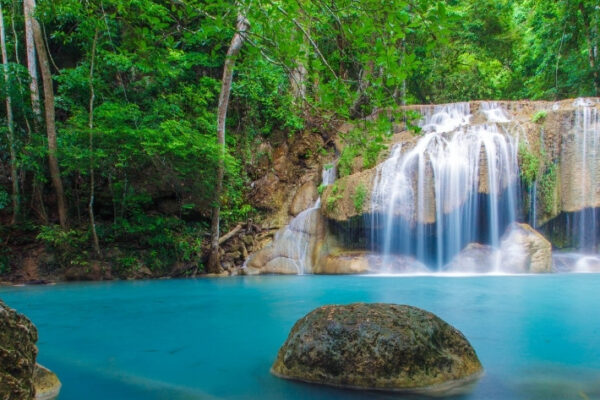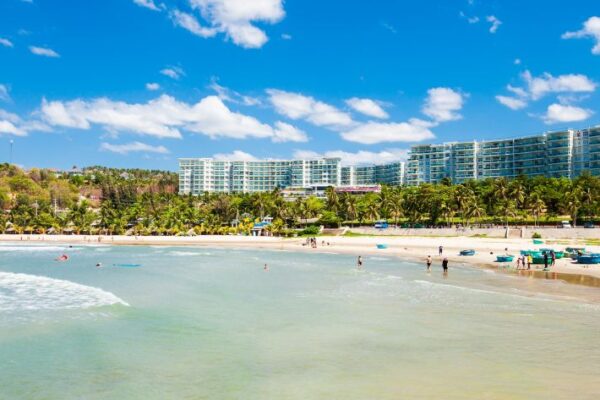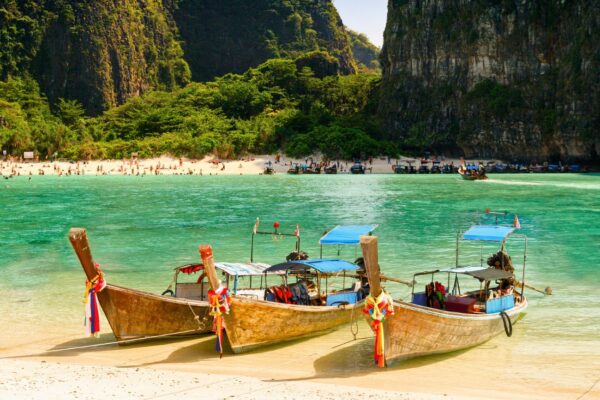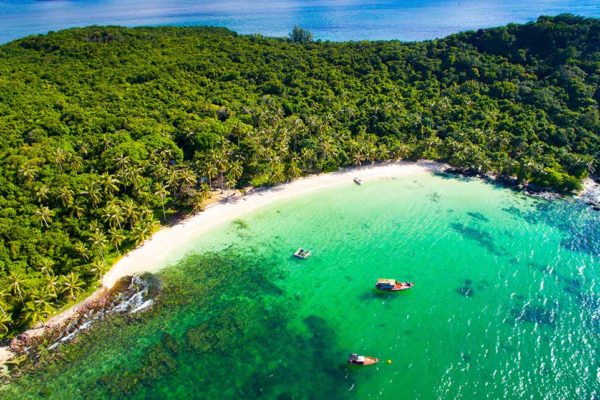Your Complete Guide to The Best Beach Town in Vietnam
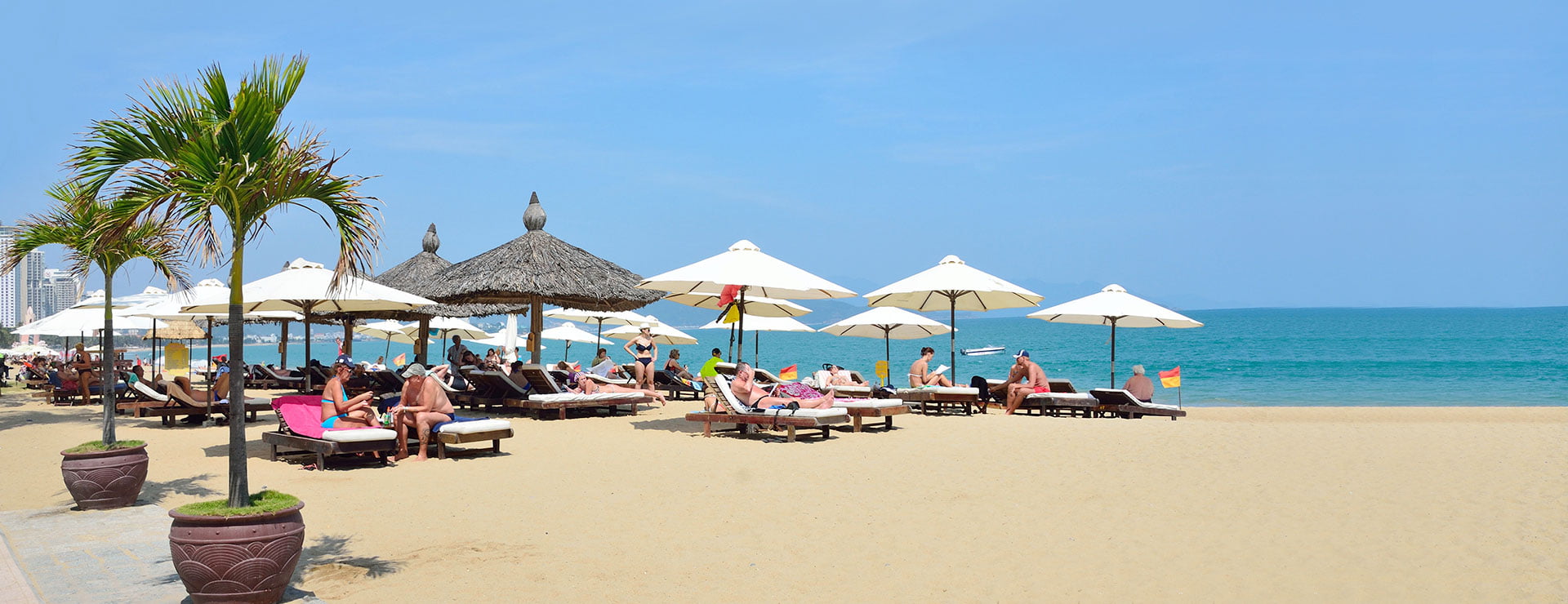
When thinking of Vietnam’s coastline, a few names probably spring to mind immediately. Yet each coastal destination in the country carries its own charm, offering unique experiences and requiring its own set of travel tips.
This guide dives into the best beach town in Vietnam, highlighting the ideal time to visit each spot, practical local tips, and seasonal considerations. Along the way, there’s also advice on enjoying each town safely and making the most of every moment by the sea.
Why This Matters
Vietnam’s geography creates three primary climate zones: the north, central coast, and south, each with varying weather patterns throughout the year (learn more details in the following part of the blog).
Understanding these patterns helps travelers plan with confidence—avoiding sudden downpours, making the most of outdoor activities, and selecting the season that best suits their mood. It also reveals quieter periods for those looking to escape the crowds and enjoy a slower pace, while highlighting peak times for those drawn to lively beaches and local festivals.
>> Read More: Top 8 Vietnam Beaches That Definitely Should Be on Your List
How Vietnam’s Coasts Differ
Northern Vietnam: Subtropical Climate
The northern region, encompassing cities like Hanoi, Halong Bay, and Cat Ba Island, experiences a humid subtropical climate. Summers (May–October) are warm and humid, with temperatures ranging from 25°C to 35°C. Winters (November–April) are cool and dry, with temperatures dropping to around 15°C.
The best beach conditions occur from May to September, offering warm waters and sunny skies. However, travelers should be aware of potential typhoons during the summer months, which can bring heavy rains and strong winds.
>> Read More: Top 3 Best Choices For North Vietnam Itinerary 7 Days
Central Vietnam: Tropical Monsoon Climate
Central Vietnam, including popular destinations like Da Nang, Hoi An, and Nha Trang, has a tropical monsoon climate. The region experiences a distinct dry season (February–August), characterized by warm temperatures and minimal rainfall. The wet season spans from September to January, with October being the peak of rainfall, often accompanied by storms and potential flooding. Travelers planning beach vacations should aim for the dry months to enjoy optimal conditions.
>> Read More: Central Vietnam Itinerary: A Luxurious Escapes of Heritage and Relaxation
Southern Vietnam: Tropical Climate
The southern region, including Ho Chi Minh City and Phu Quoc Island, enjoys a tropical climate with consistent temperatures around 27°C year-round. The dry season (November–April) offers sunny and warm weather ideal for beach activities. The wet season (May–October) brings afternoon showers and higher humidity. Notably, Phu Quoc’s peak rainfall occurs in August and September, which may affect travel plans.
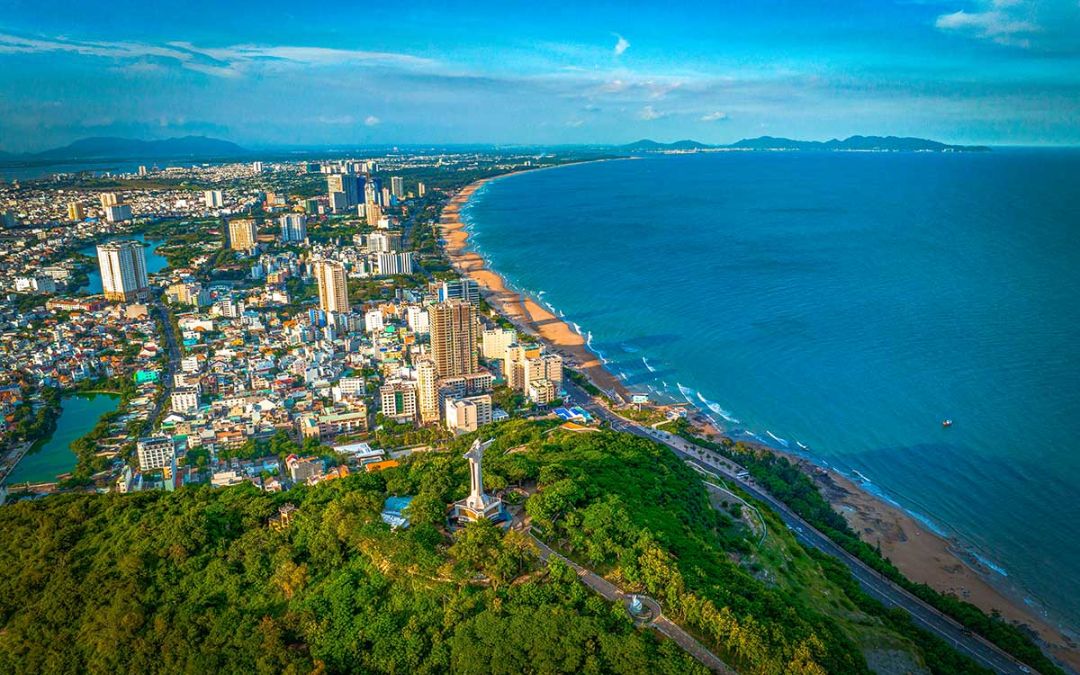
Every beach town in Vietnam offers a unique blend of coastal beauty and vibrant urban development along the country’s stunning shoreline.
>> Read More: Top 10 Best Holiday Destinations in December Around Southeast Asia
Month-by-Month Playbook
January
Best Towns
As the year unfolds, each beach town in Vietnam’s southern coastal region—Phu Quoc, Con Dao, Mui Ne, Phan Thiet, and Vung Tau—offer ideal beach conditions. This period marks the dry season in these regions, characterized by clear skies and warm temperatures, making it the perfect time for beachgoers to visit. While the central coast, including Da Nang, begins to experience improved weather towards the end of the month, it remains drier and more favorable for beach activities in February.
January presents calm seas and abundant sunshine across southern Vietnam. In Da Nang, rainfall is at its annual low, with conditions trending towards February’s peak dryness. This combination of factors ensures a pleasant beach experience, with minimal disruptions from weather-related issues.
What To Expect
- Snorkeling trips in Phu Quoc: Explore the vibrant marine life and clear waters of Phu Quoc’s An Thoi Archipelago. January’s calm seas provide excellent visibility for underwater adventures.
- Kitesurfing lessons in Mui Ne: Take advantage of the consistent winds in Mui Ne, a renowned kitesurfing destination. January’s favorable wind conditions make it an ideal time for both beginners and experienced enthusiasts.
Watch-Out
While southern Vietnam enjoys optimal beach conditions in January, northern waters remain cooler, making beach activities less appealing during this time.
February
Best Towns
February is an excellent time to explore each beach town in Vietnam’s central and southern coastal regions. Destinations such as An Bang, Da Nang, Nha Trang, Mui Ne, and Phu Quoc offer favorable weather conditions during this month. These regions experience dry and sunny days, making it ideal for beach activities and outdoor adventures.
In February, Da Nang experiences its driest month, with minimal rainfall and pleasant temperatures ranging from 19°C to 25°C. This creates optimal conditions for beachgoers to enjoy the coastline and explore the city’s attractions. Similarly, other coastal towns like Hoi An, Nha Trang, Mui Ne, and Phu Quoc also benefit from favorable weather, ensuring a comfortable and enjoyable experience for visitors.
What To Expect
- Beachfront stays in Hoi An: Reserve accommodations along An Bang Beach or Cua Dai Beach to enjoy direct access to the sand and sea. These areas offer a range of options from boutique resorts to cozy homestays.
- Lantern night add-ons in Hoi An: Enhance your visit by participating in the monthly Lantern Festival, held on the 14th day of the lunar calendar. The town is illuminated with colorful lanterns, creating a magical atmosphere. Many hotels and tour operators offer packages that include lantern-making workshops and evening boat rides along the river.
>> Read More: A Complete Guide To The Ultimate Hoi An Tour Experience
March
Best Towns
March is a prime month to explore Vietnam’s central and southern coastal towns, including Hoi An, Da Nang, Hue, Lang Co, Mui Ne, and Phu Quoc. These regions experience dry, sunny weather, making it ideal for beach activities and outdoor adventures.
Nha Trang, in particular, remains relatively dry during this time, with rainfall increasing later in the month. This period offers such a balance between pleasant temperatures and minimal precipitation for a comfortable beach experience.
In Nha Trang, March continues to offer favorable conditions for beachgoers. The city enjoys warm temperatures and clear skies, with rainfall remaining low. This makes it an excellent time for water activities and exploring the surrounding islands. As the month progresses, the likelihood of rain gradually increases, so early March is particularly advantageous for outdoor pursuits.
What To Expect
- Island-hopping in Nha Trang: Embark on boat tours to nearby islands such as Mun, Mot, and Tam, renowned for their clear waters and vibrant marine life. These excursions often include snorkeling and diving opportunities, allowing visitors to experience the rich underwater ecosystem.
- Son Tra Peninsula and beach combo in Da Nang: Combine a visit to the lush Son Tra Peninsula, home to diverse flora and fauna, with relaxation on Da Nang’s My Khe Beach. This combination offers a mix of nature exploration and beach leisure, catering to various interests.
April
Best Towns
April stands as a prime month for beach enthusiasts, offering a harmonious blend of favorable weather and fewer crowds across each beach town in Vietnam’s central and southern coastal regions. Destinations such as Hoi An, Da Nang, Nha Trang, Mui Ne, and Phu Quoc present optimal conditions for beach activities, especially for travelers seeking sun-soaked experiences.
This period falls within the shoulder season, allowing visitors to enjoy beach-perfect weather without the influx of summer tourists. The central and southern regions bask in warm temperatures and clear skies, creating an inviting atmosphere for various outdoor pursuits.
May
Best Towns
May marks a transitional period along Vietnam’s coastlines, particularly affecting the central and northern regions. Destinations such as Da Nang, Hoi An, Quy Nhon, and Cat Ba experience a shift in weather patterns, with increasing humidity and the onset of the rainy season. While these areas remain relatively dry early in the month, travelers should be prepared for the gradual rise in precipitation and humidity levels.
Watch-Out
As May progresses, the likelihood of rain increases, and humidity levels rise across the country. Travelers should be prepared for these changing conditions by packing appropriate clothing and staying hydrated. It’s advisable to plan outdoor activities during the cooler parts of the day and have indoor alternatives in case of rain.
June
Best Towns
June stands out as an exceptional month for any beach town in Vietnam, particularly along the central coast. Destinations such as Da Nang, Hoi An, and Quy Nhon offer optimal conditions for seaside retreats. These areas remain largely dry and sunny, providing ideal settings for various beach activities.
In contrast, southern regions like Phu Quoc and Mui Ne begin to experience the onset of the wet season, characterized by brief but intense afternoon showers. While these showers are typically short-lived, they can momentarily affect outdoor plans.
What to Expect
Family beach holidays in Da Nang/Hoi An: These destinations are perfect for family vacations, offering a blend of cultural experiences and beach relaxation. Families can explore the ancient town of Hoi An, known for its lantern-lit streets and rich history, or enjoy the vibrant atmosphere and modern amenities of Da Nang. Both locations provide a variety of accommodations and activities suitable for all ages.
July
Best Towns
July marks the height of Vietnam’s summer travel season, particularly along the central coast. Destinations such as Da Nang, Hoi An, and Nha Trang experience their peak tourist months, attracting both international visitors and domestic travelers seeking beach vacations. The weather remains favorable, with warm temperatures and abundant sunshine.
The central coast is at its busiest during July, leading to crowded beaches and higher prices. It’s advisable to book accommodations and activities well in advance to secure the best options. Additionally, while the weather is generally favorable, it’s essential to stay informed about local conditions and be prepared for occasional changes.
August
Best Towns
August continues to offer favorable beach conditions along Vietnam’s central coast, including Da Nang, Hoi An, and Nha Trang. However, as the month progresses, the likelihood of storms increases, particularly in the latter half.
In contrast, southern regions such as Phu Quoc experience their peak rainy season during this time, characterized by frequent and intense showers. Despite these conditions, the central coast remains a viable option for beachgoers, provided they stay informed about weather developments and adjust plans accordingly.
Watch-Out
Late summer to autumn marks the onset of typhoon season in the South China Sea, with storms potentially impacting Vietnam’s coastal areas. Travelers planning to visit coastal regions during this period should monitor weather forecasts closely and maintain flexible itineraries to accommodate any sudden changes.
September
Best Towns
Early September still offers decent beach weather in each beach town in Vietnam’s central region, with temperatures averaging between 24°C and 32°C. However, as the month progresses, the region enters its rainy season, characterized by increased humidity and frequent rainfall.
Hoi An, in particular, begins to experience more consistent showers, signaling the onset of the wet season that typically lasts until November. While the southern parts of Vietnam, such as Phu Quoc, remain relatively warm, they too start to see an uptick in rainfall as the month advances.
Late-summer and early-autumn weather systems can develop rapidly in the South China Sea, bringing storms that may interrupt travel plans along the central coast. It’s important to stay updated on forecasts and maintain flexibility when planning trips to Hoi An or nearby coastal towns during this period.
Watch-Out
Late-summer and early-autumn weather systems can develop rapidly in the South China Sea, bringing storms that may interrupt travel plans along the central coast. It’s important to stay updated on forecasts and maintain flexibility when planning trips to Hoi An or nearby coastal towns during this period.
October
Best Towns
October is the wettest month for central Vietnam, including Da Nang and Nha Trang, with rainfall often exceeding 300mm. This period marks the peak of the rainy season, characterized by frequent downpours and an elevated risk of flooding, particularly in low-lying areas.
In contrast, southern regions like Phu Quoc begin to emerge from the monsoon’s grip, experiencing lighter rains and improved conditions toward the month’s end.
The combination of intense rainfall and the potential for typhoons during this time increases the risk of flooding in central Vietnam. Travelers planning to visit during this period should stay informed about weather forecasts and be prepared for potential disruptions.
November
Best Towns
While the central coast remains in its rainy season, November marks the start of the dry season in each beach town in Vietnam’s southern region, offering ideal conditions for beach activities. Phu Quoc, Con Dao, and Mui Ne experience reduced rainfall, with average temperatures ranging from 25°C to 30°C. Sea conditions are generally calm, making it a perfect time for snorkeling, diving, and other water sports.
What To Expect
- Open-water trips in Phu Quoc: Engage in snorkeling and diving excursions to explore vibrant coral reefs and diverse marine life. Operators like Vietnam Active Phu Quoc Diving Center offer PADI courses and guided tours.
- Resort packages in Con Dao: Enjoy luxurious stays at beachfront resorts, such as the Six Senses Con Dao, which offer private villas, spa services, and curated island experiences.
December
Best Towns
By December, southern Vietnam shines with ideal beach conditions, with destinations like Phu Quoc, Con Dao, and Mui Ne enjoying sunny skies and calm seas. Central regions such as Da Nang and Hoi An start to recover from the rainy season late in the month, offering improved beach opportunities, while northern areas remain cool, less suited for traditional beach activities.
Tip
Travelers planning early December trips may find lower rates on accommodations and tours compared to the busier holiday period later in the month. Booking during this window can provide both favorable weather in the south and better value for beach vacations.
Town-by-Town Mini Guides
Da Nang & Hoi An (An Bang/Cua Dai)
Best Beach Window
The ideal time for beachgoers in Da Nang and Hoi An stretches from February through August, when rainfall is minimal and skies are generally clear. During these months, coastal conditions are perfect for sunbathing, swimming, and a variety of water activities. In contrast, October marks the wettest period, bringing heavier showers and occasional flooding that can disrupt outdoor plans.
Signature Experiences
- My Khe surfing: Catch waves at Da Nang’s iconic My Khe Beach, which offers consistent surf conditions suitable for both beginners and experienced surfers.
- Hoi An lantern nights and beach Day: Combine an evening stroll through Hoi An’s lantern-lit streets with a relaxing day at nearby An Bang or Cua Dai Beach, merging cultural immersion with seaside leisure.
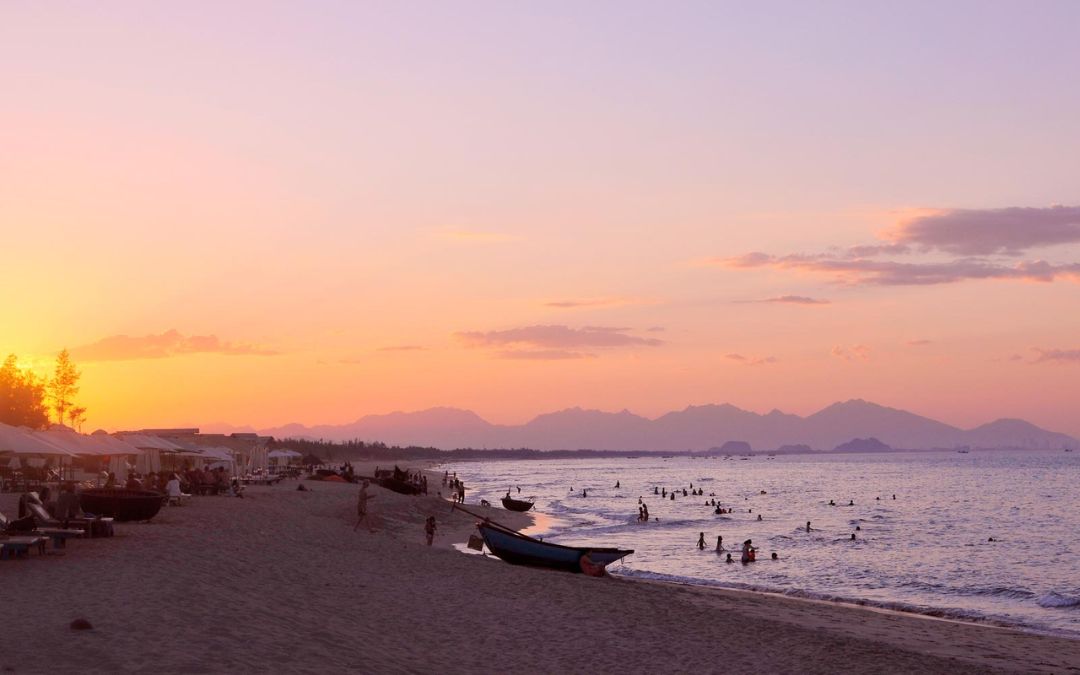
An Bang Beach exemplifies the peaceful charm found in every authentic beach town in Vietnam.
>> Read More: Top Da Nang Beach Spots You Can’t Miss on Your Trip
Nha Trang
Best Beach Window
The prime period for visiting Nha Trang’s beaches runs from February to August, when sunny days and calm seas dominate. This stretch offers excellent conditions for swimming and water-based activities, while October marks the peak of rainfall, which can limit outdoor plans and affect sea conditions.
Signature Experiences
- Island-hopping adventures: Explore nearby islands such as Hon Mun and Hon Tam, enjoying pristine beaches, snorkeling spots, and scenic views along the way.
- Snorkeling excursions: Discover vibrant coral reefs and diverse marine life just off Nha Trang’s coastline, ideal for both beginners and experienced snorkelers.
- Cable car to Hon Tre: Take the longest oversea cable car in the world to Hon Tre Island, offering panoramic views of the bay and easy access to Vinpearl attractions and beaches.
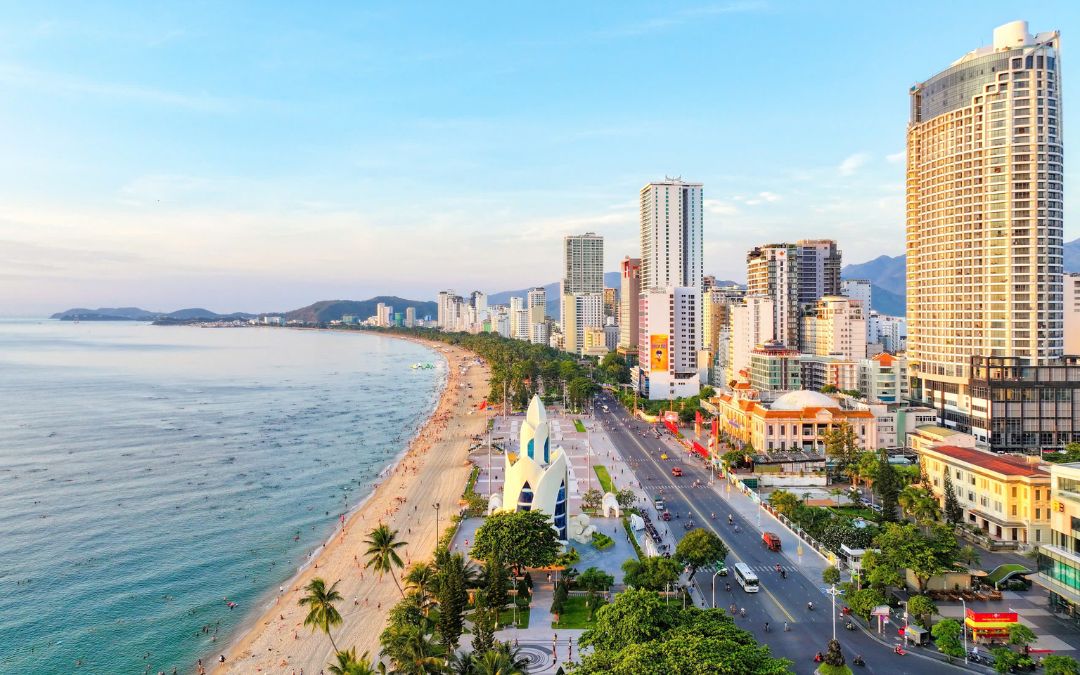
>> Read More: Perfect Nha Trang Island Hopping Journeys with Snorkeling, Sunbathing, and Sailing
Quy Nhon
Best Beach Window
The optimal time to enjoy Quy Nhon’s beaches is from March through August, when sunshine is abundant and rainfall is limited. This period offers ideal conditions for swimming, sunbathing, and exploring the coastline. As a quieter alternative to more popular beach town in Vietnam like Nha Trang, Quy Nhon provides a more relaxed beach experience, though it’s always advisable to verify local conditions before planning a trip.
Signature Experiences
- Ky Co & Bai Xep Beaches: Discover secluded stretches of sand with clear waters, perfect for swimming, sunbathing, and photography.
- Snorkeling & swimming: Explore underwater life in Quy Nhon’s calm waters, especially around small offshore islets.
- Cycling & coastal exploration: Rent a bike to traverse scenic coastal roads and fishing villages, soaking in the region’s tranquil charm.
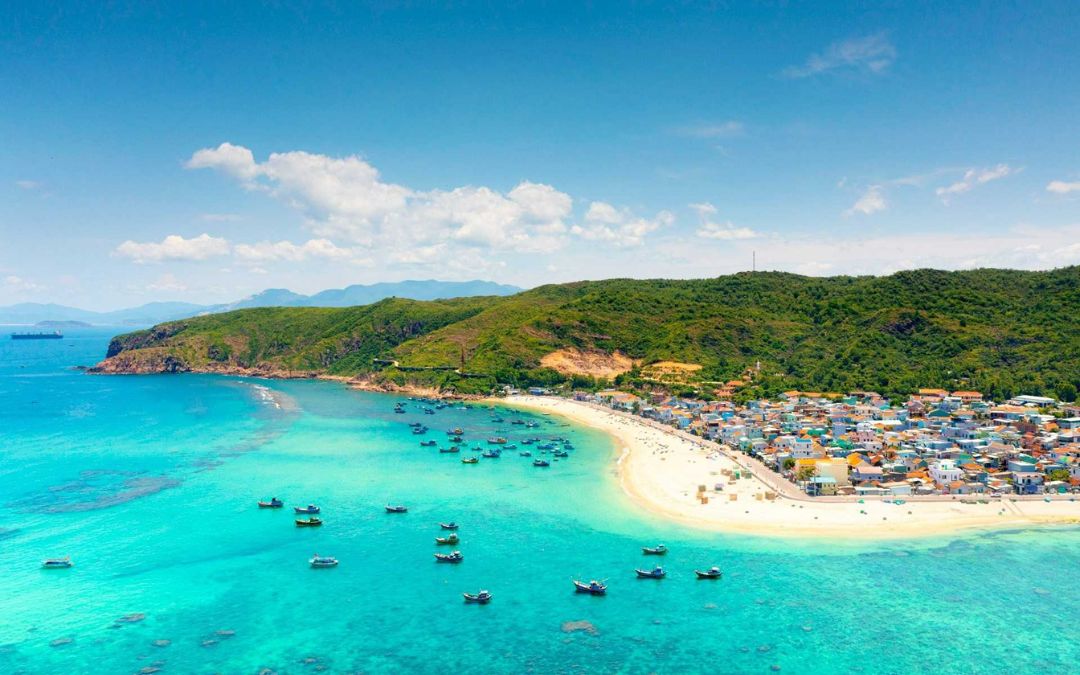
Quy Nhon offers pristine beauty and a tranquil atmosphere.
Mui Ne/Phan Thiet
Best Beach Window
The ideal months to visit Mui Ne and Phan Thiet run from November through April, when the region enjoys a drier micro-climate and consistent sunshine. This season also brings steady winds, creating perfect conditions for kitesurfing and other wind-based water sports, while rainfall is minimal and coastal waters remain calm.
Signature Experiences
- Kitesurfing & windsurfing: Take advantage of the reliable winds along Mui Ne Beach, suitable for both beginners and advanced riders seeking thrilling water sports experiences.
- Fairy stream & sand dunes: Explore the unique red and white sand dunes or stroll along the shallow, winding Fairy Stream for a picturesque adventure.
- Fishing village visits: Witness local life in Phan Thiet’s traditional fishing villages, observing daily routines and sampling fresh seafood.
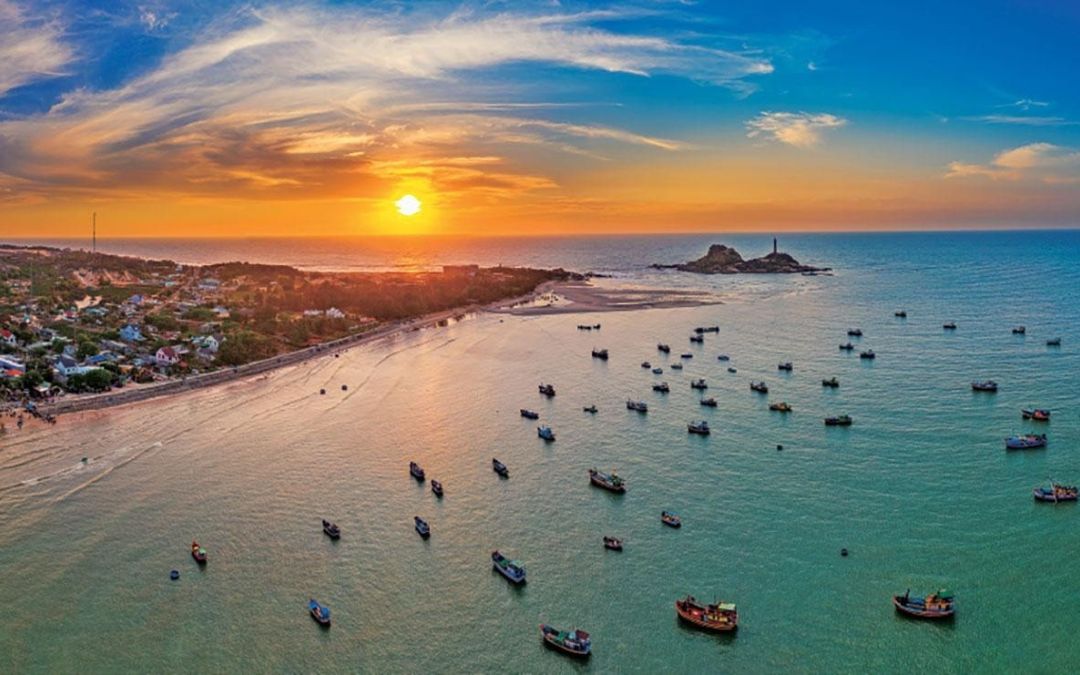
Phan Thiet showcases the traditional fishing heritage that makes each beach town in Vietnam culturally distinctive and authentic.
Phu Quoc
Best Beach Window
The prime period for visiting Phu Quoc is from November through April, when the island experiences dry weather, calm seas, and abundant sunshine. Rainfall is minimal during these months, creating ideal conditions for beach activities and water-based adventures. Conversely, August and September mark the peak of the rainy season, with heavier showers and occasional storms.
Signature Experiences
- Starfish Beach: Relax on tranquil shores scattered with vibrant starfish, perfect for swimming, sunbathing, and photography.
- Snorkeling in the An Thoi Archipelago: Explore the clear waters and vibrant coral reefs surrounding the islands south of Phu Quoc, offering excellent snorkeling opportunities.
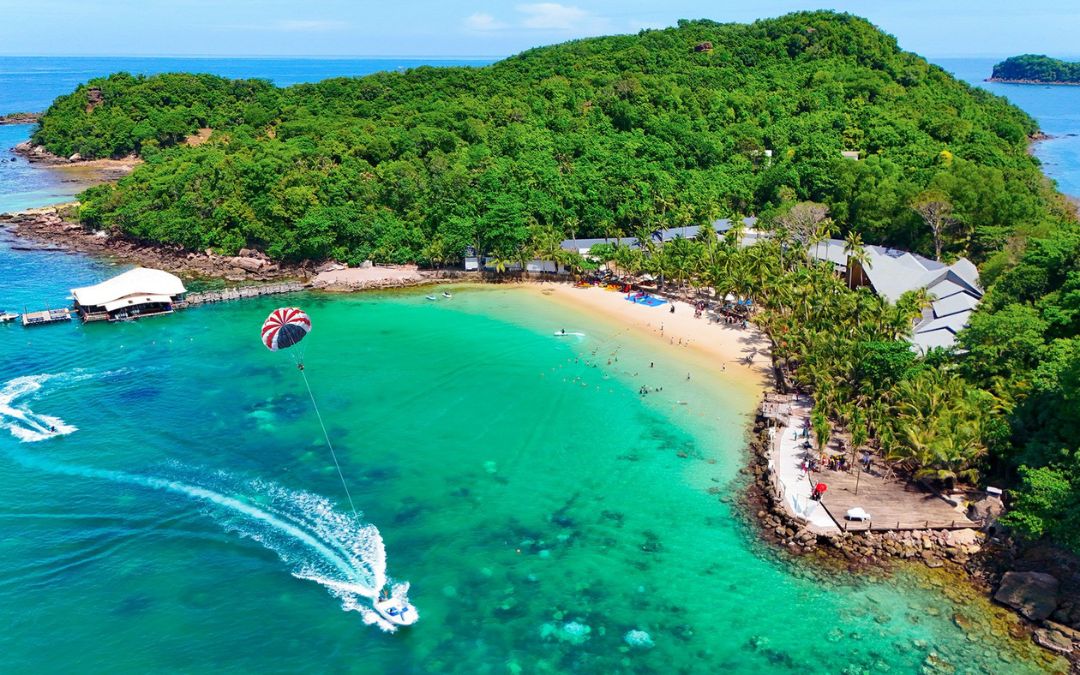
Phu Quoc represents the tropical paradise experience that makes Vietnam a world-class destination.
>> Read More: Phu Quoc Weather Guide – The Best Time to Visit for a Perfect Trip
Con Dao
Best Beach Window
The optimal time to visit Con Dao is from November through April, when the seas are calm and the weather is predominantly dry. This period provides excellent conditions for swimming, snorkeling, and exploring the island’s pristine beaches. Con Dao is also known for its eco-friendly resorts and retreats, offering a quieter and more sustainable alternative to busier southern destinations.
Signature Experiences
- Relaxing at Bai Dat & Dam Trau Beaches: Enjoy unspoiled stretches of sand with clear waters, ideal for swimming, sunbathing, and peaceful walks.
- Eco-Friendly Retreats: Stay at sustainable resorts that emphasize conservation, providing a serene and responsible travel experience.
- Historical & Nature Tours: Explore the island’s history at the Con Dao Prison sites and trek through national parks to observe unique flora and fauna.
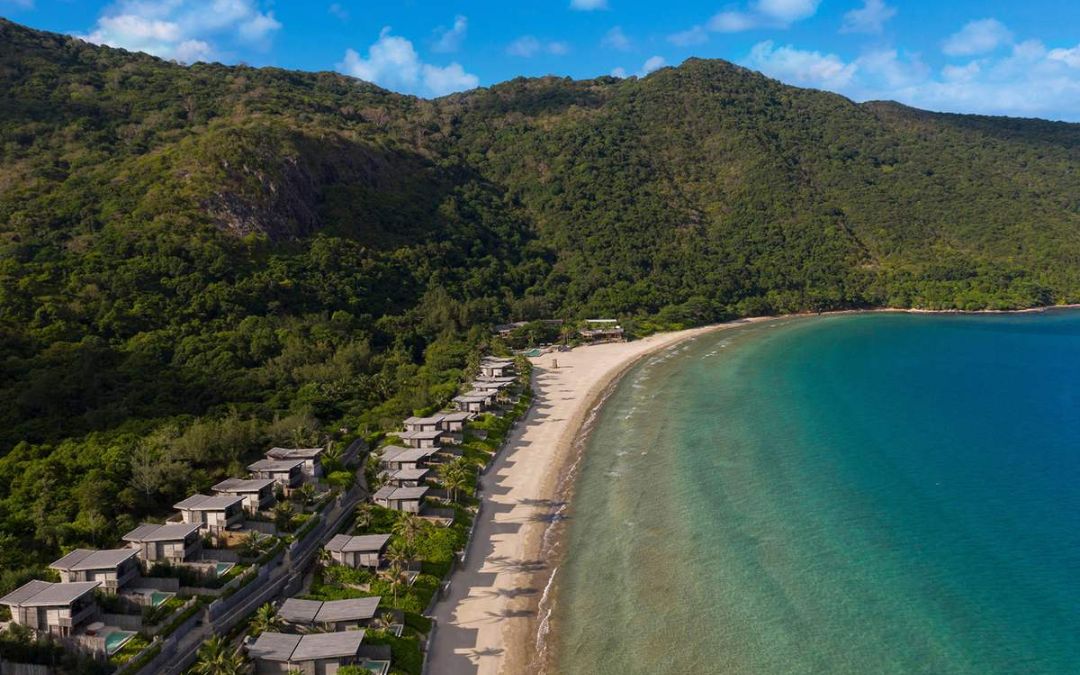
Any traveler can find secluded luxury and untouched nature in Con Dao.
Cat Ba
Best Beach Window
The ideal time to visit Cat Ba is from May through September, when the waters are warm and the weather is generally sunny, making it perfect for swimming and coastal activities. Winters tend to be cool, overcast, and less suitable for beach outings, so planning a trip during the warmer months ensures the most enjoyable seaside experience.
Signature Experiences
- Cat Co Beaches: Relax on Cat Co 1, 2, and 3 beaches, which offer soft sand, calm waters, and scenic mountain backdrops.
- Boat Tours Around Lan Ha Bay: Explore the limestone karsts and hidden coves surrounding Cat Ba Island, ideal for kayaking and sightseeing.
- Trekking & National Park Visits: Hike through Cat Ba National Park to spot endemic wildlife and enjoy panoramic views of the island and coastline.
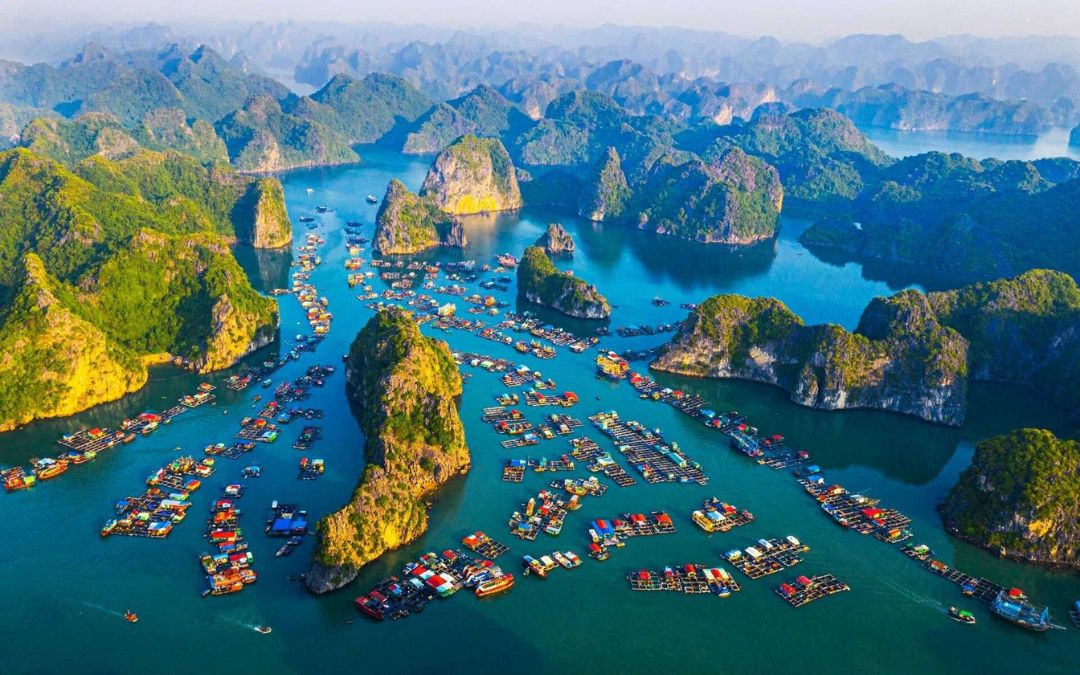
Cat Ba combines dramatic limestone landscapes with maritime culture, making it a uniquely scenic beach town in Vietnam.
What to Pack by Season
Dry season (Nov–Apr, South | Feb–Aug, Central)
- Reef-safe sunscreen: Protect skin while preserving marine ecosystems, essential for snorkeling, diving, or beach days.
- Rash guards or swim shirts: Provide sun protection and comfort during prolonged water activities.
- Travel insurance with water-sport coverage: Ensure coverage for activities such as surfing, kitesurfing, and snorkeling, adding peace of mind for adventurous days.
- Lightweight clothing & sunglasses: Breathable fabrics and UV protection keep you comfortable under the strong sun.
Wet season (May–Oct South | Sep–Nov Central)
- Packable rain jacket or poncho: Lightweight and easy to carry for sudden tropical showers.
- Dry bags for gear & electronics: Keep valuables safe from rain or unexpected splashes during island trips or boat excursions.
- Flexible Booking Options: Choose accommodations and tours with changeable dates to accommodate unpredictable weather.
- Quick-dry clothing & waterproof footwear: Helps stay comfortable when moving between wet beaches, trails, or local markets.
Storms, Seas & Safety
Central Vietnam Storm Window
From September through November, central Vietnam steps into its stormier season. October often brings the heaviest rainfall, and towns along the coast, like Hoi An and the Hue corridor, can see occasional flooding. Yet, even during this time, there are calmer moments between showers. Checking local forecasts can help uncover the perfect windows for beach strolls or riverside walks.
Typhoon Awareness
Late summer to early autumn also carries a higher chance of tropical cyclones forming over the South China Sea. Storms can appear quickly, shifting plans in an instant. Staying flexible and keeping an eye on updated weather reports allows for a safe and uninterrupted experience. Such action can turn even a stormy day into an opportunity to discover quieter corners of the coast or watch dramatic skies over the sea.
Final Words
Vietnam is such a wonderful country, which boasts a coastline that stretches over 3,000 kilometers, dotted with various beaches. Yet not all stretches of sand are the same—weather patterns, seasonal rains, and coastal conditions vary widely from north to south. Being mindful of these differences, from storm windows in central Vietnam to the dry-season gems of the south, can make all the difference in planning a smooth, enjoyable trip.
Even when weather shifts unexpectedly, Asia Pioneer Travel ensures every journey remains safe and worry-free. With professional guidance, local expertise, and flexible planning, Asia Pioneer Travel will tailor your experience in Vietnam’s best beach town and take care of the details, allowing you to focus solely on discovery and enjoyment.
